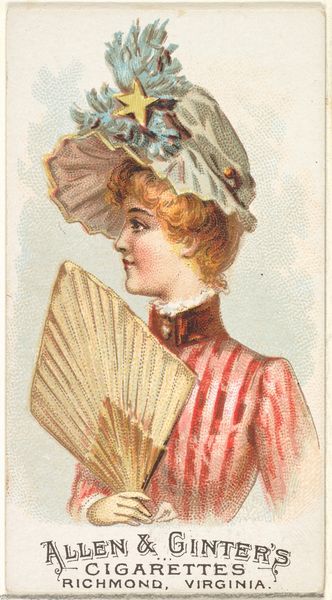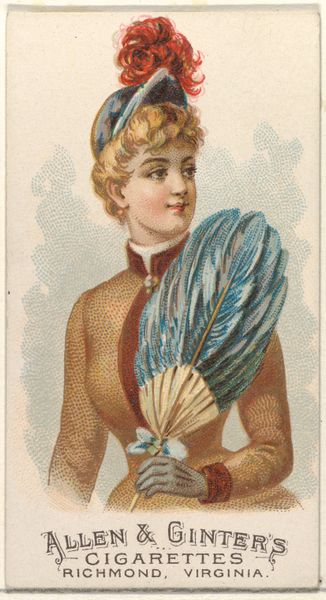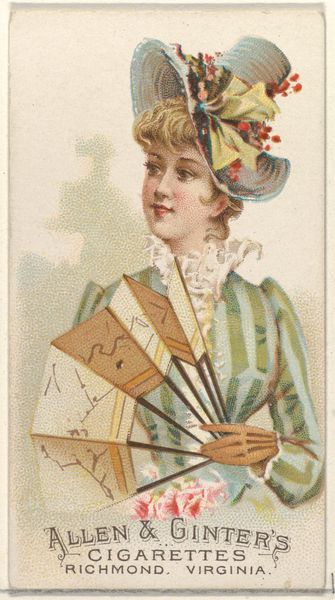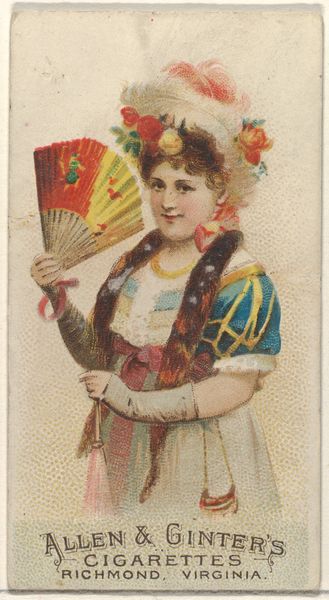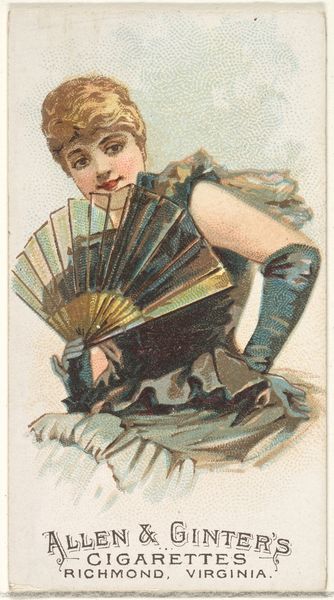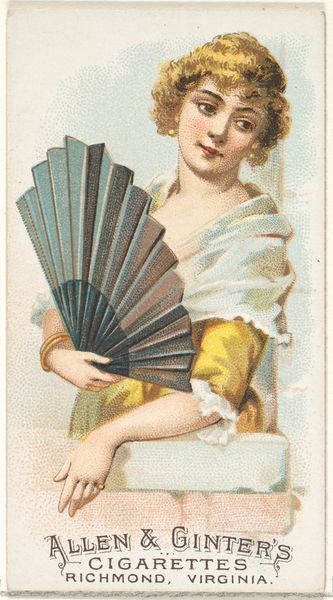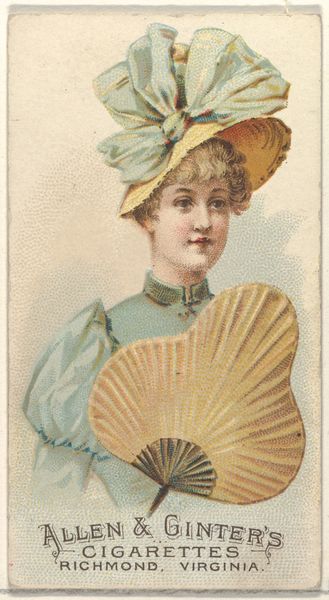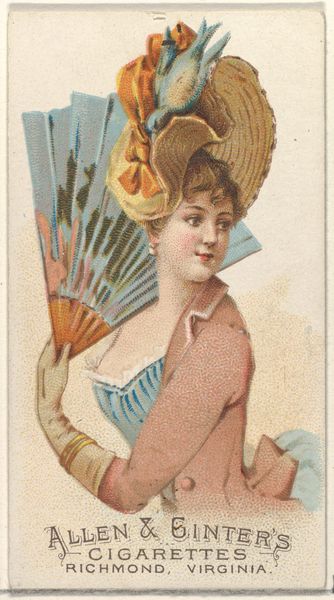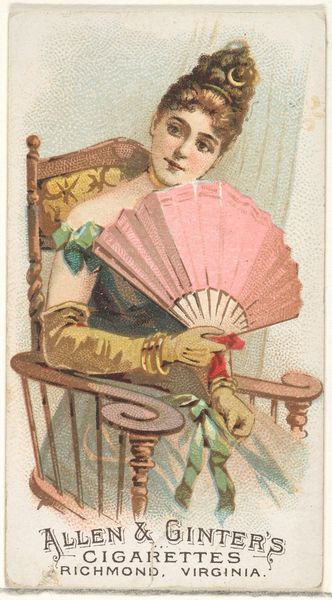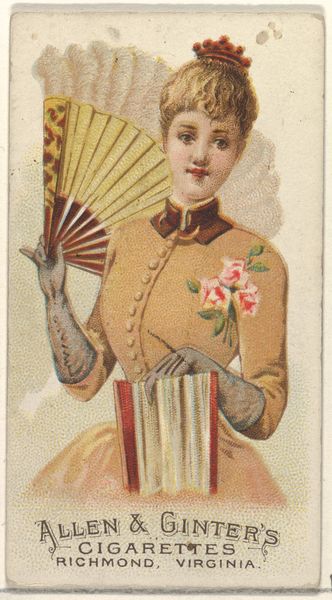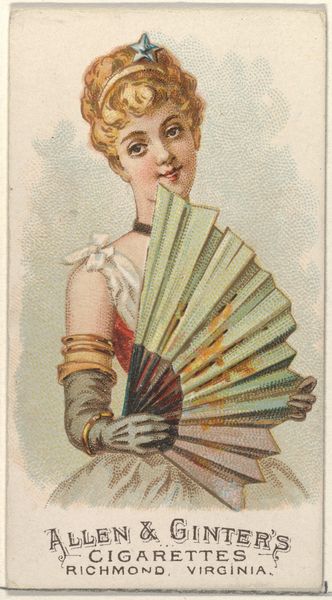
Plate 35, from the Fans of the Period series (N7) for Allen & Ginter Cigarettes Brands 1889
0:00
0:00
Dimensions: Sheet: 2 3/4 x 1 1/2 in. (7 x 3.8 cm)
Copyright: Public Domain
Curator: Ah, let's discuss this fascinating piece. It's "Plate 35, from the Fans of the Period series" made in 1889 for Allen & Ginter Cigarettes. This lithograph and colored pencil drawing is currently housed at the Metropolitan Museum of Art. Editor: It has a lovely, frivolous air. The light palette and the woman's slightly caricatured features, along with that massive feather... it feels almost dreamlike and ethereal, even. Curator: Indeed. Note how the composition emphasizes verticality, with the subject’s gaze aligning with the upshot fan, creating a pleasing geometric symmetry. The artist also contrasted warm and cool hues using, to stunning effect, both vivid color blocks alongside softer muted passages in the background. Editor: I find the context compelling. This was a mass-produced image meant to sell cigarettes. This commodification of the feminine ideal, blending class aspiration with accessibility, reflects the emergent consumer culture of the late 19th century. And cigarettes from Richmond, Virginia, hint at tobacco's ties to racial inequalities. Curator: Undoubtedly. The very medium – mass-produced print – lends itself to the study of reproduction and dissemination of images, and of course their embedded values. The semiotic load within such seemingly innocuous objects is intense. Editor: Absolutely. And who was this woman? Was she a performer, a socialite, or merely a figment of the artist’s imagination packaged for consumption? These objects acted not only to perpetuate ideals of beauty but, more problematically, gender expectations of that time. Curator: I concede. While form alone offers aesthetic appreciation, contextualizing the art enhances our critical faculties. We’re left contemplating its place and what it has come to represent within a culture undergoing change and, inevitably, remaining implicated within a troubled history. Editor: Precisely. These glimpses into the past allow us not just to understand its aesthetics, but confront it through thoughtful, critical assessment, considering what they perpetuate still in our image saturated now.
Comments
No comments
Be the first to comment and join the conversation on the ultimate creative platform.
